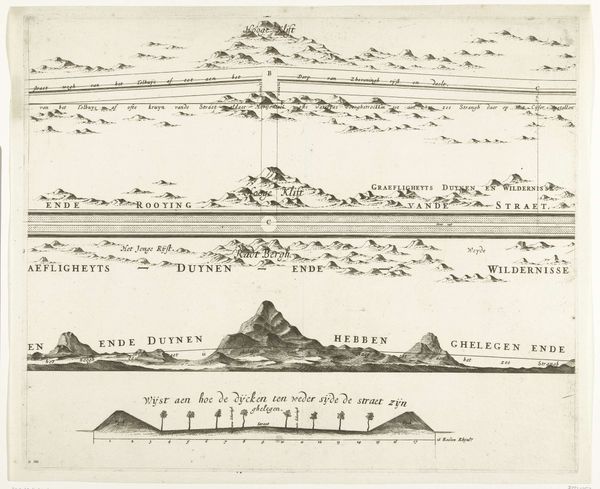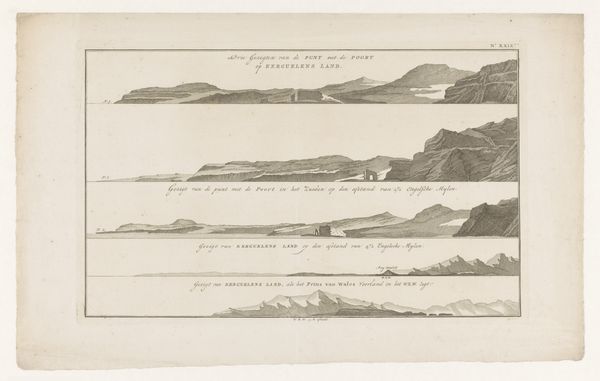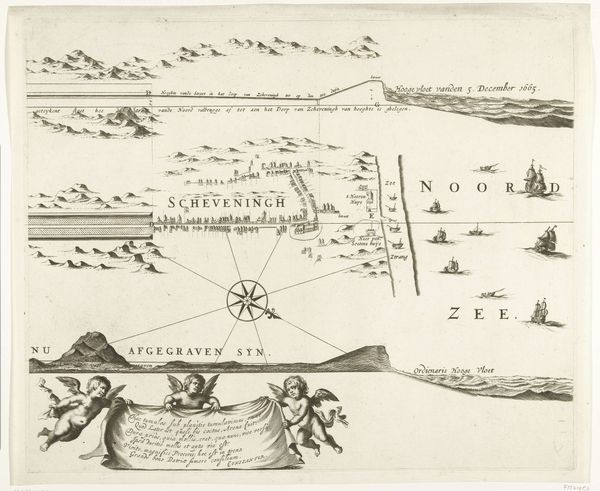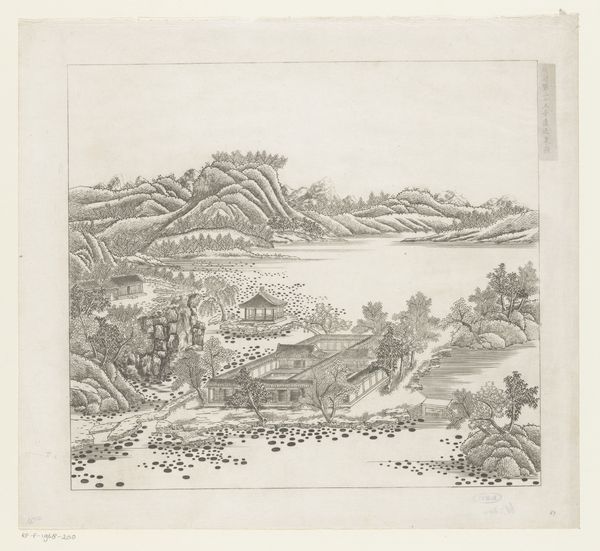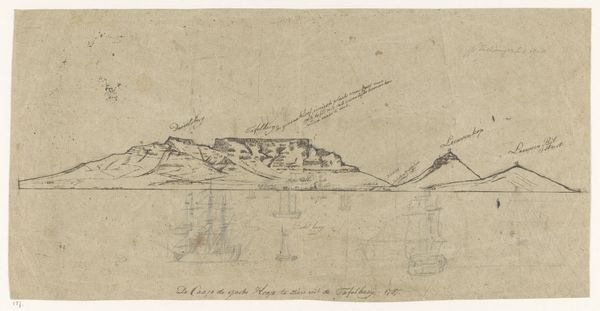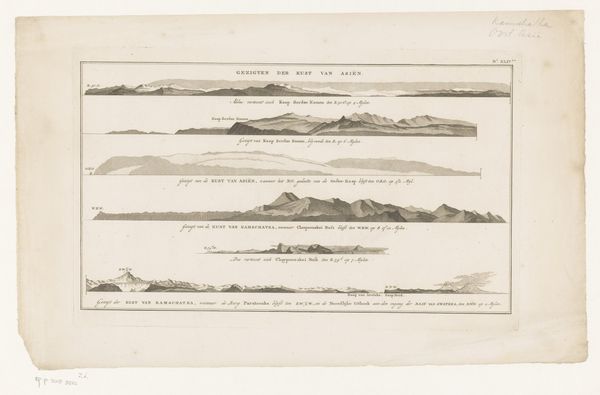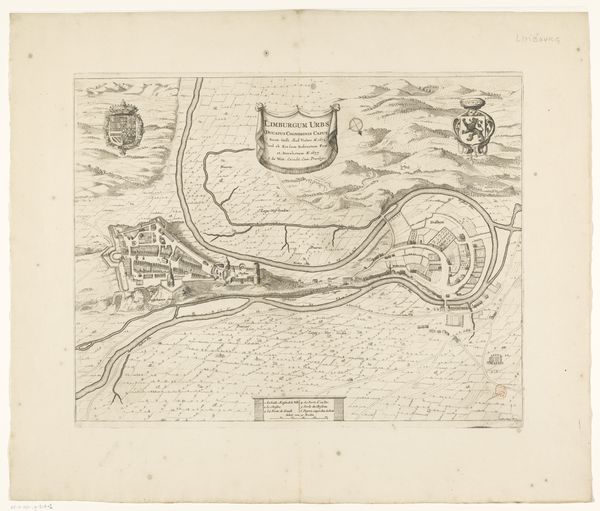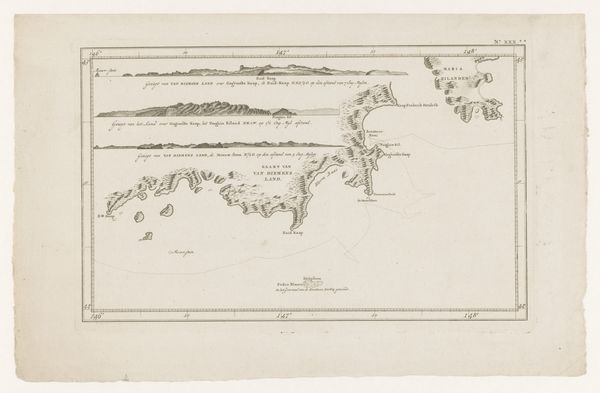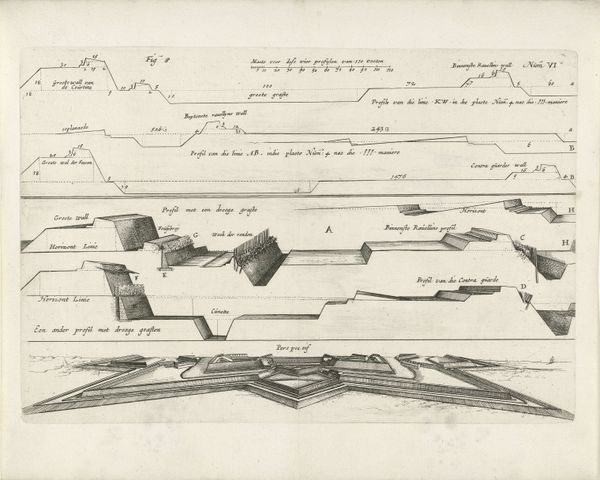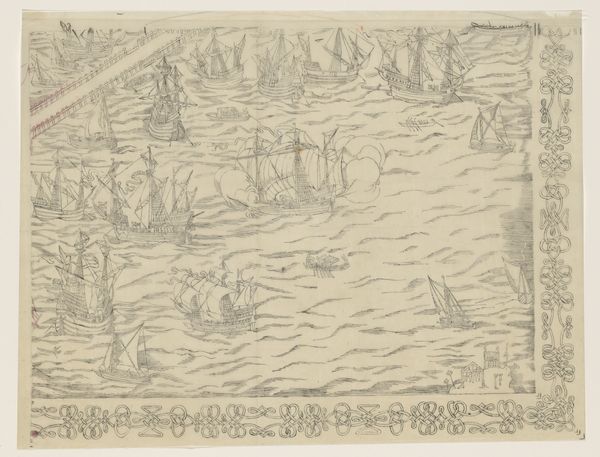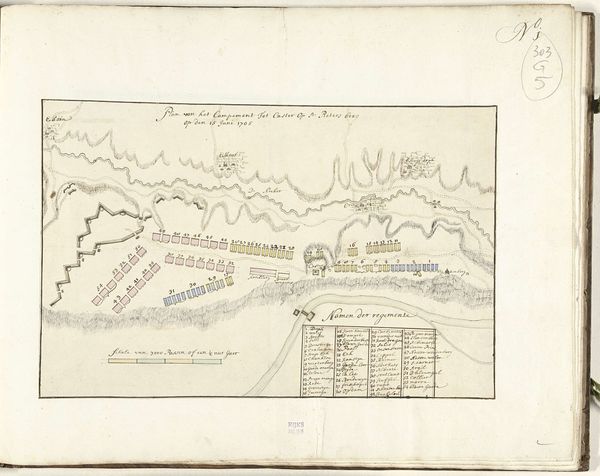
Kaart van de aanleg van de straatweg van Den Haag naar Scheveningen, 1664-1665 1667
0:00
0:00
#
comic strip sketch
#
quirky sketch
#
sketch book
#
personal sketchbook
#
road
#
idea generation sketch
#
sketchwork
#
pen work
#
sketchbook drawing
#
storyboard and sketchbook work
#
sketchbook art
Dimensions: height 420 mm, width 1526 mm
Copyright: Rijks Museum: Open Domain
Curator: We are looking at Frederik de Wit’s 1667 pen drawing, "Kaart van de aanleg van de straatweg van Den Haag naar Scheveningen, 1664-1665," housed here at the Rijksmuseum. Editor: Immediately, the composition strikes me as uniquely engaging. The layered perspectives and delicate linework impart a surprisingly dreamlike quality to a practical, geographical rendering. Curator: Indeed. De Wit meticulously outlines the road construction between The Hague and Scheveningen. However, the aesthetic impact arises from its presentation of socio-political advancement. Note how this thoroughfare would have influenced commerce, communication, and even leisure for the rising merchant class. Editor: From a purely aesthetic perspective, the rendering is fascinating. It is quite elaborate, almost sculptural in its dimensionality, isn't it? It employs linear hatching and cross-hatching which adds tonal contrast and emphasizes details, resulting in an engagingly complex overall form. I wonder about De Wit's decisions regarding line weight here. Curator: Line weight does matter when determining intent, doesn’t it? Here it likely signified both material substance and also social power. As you’ll note, the newly built road and Scheveningen's growing infrastructure receive an outsized emphasis, signaling a move toward modernization. He isn't just depicting the layout; he’s visualizing progress. Editor: The topography shown here almost seems designed to communicate not just place, but power; like a carefully composed stage set or architectural rendering celebrating material advancement. I suppose in some ways it is, right? Curator: In its cultural and historical context, this map also signifies burgeoning Dutch influence in global trade. Editor: I agree. And stepping back to our formal concerns, the orientation and its internal, organized chaos evokes earlier cartographic design that, despite its practicality, conveys layers of artistic refinement. Curator: Looking closely at "Kaart van de aanleg," it’s clear that it mirrors not just the lay of the land but also the ambition and innovation characteristic of its era. Editor: For me, its strength comes from the delicate juxtaposition between the artistic expression and detailed plan which makes it still quite striking to observe so many years after its completion.
Comments
No comments
Be the first to comment and join the conversation on the ultimate creative platform.
